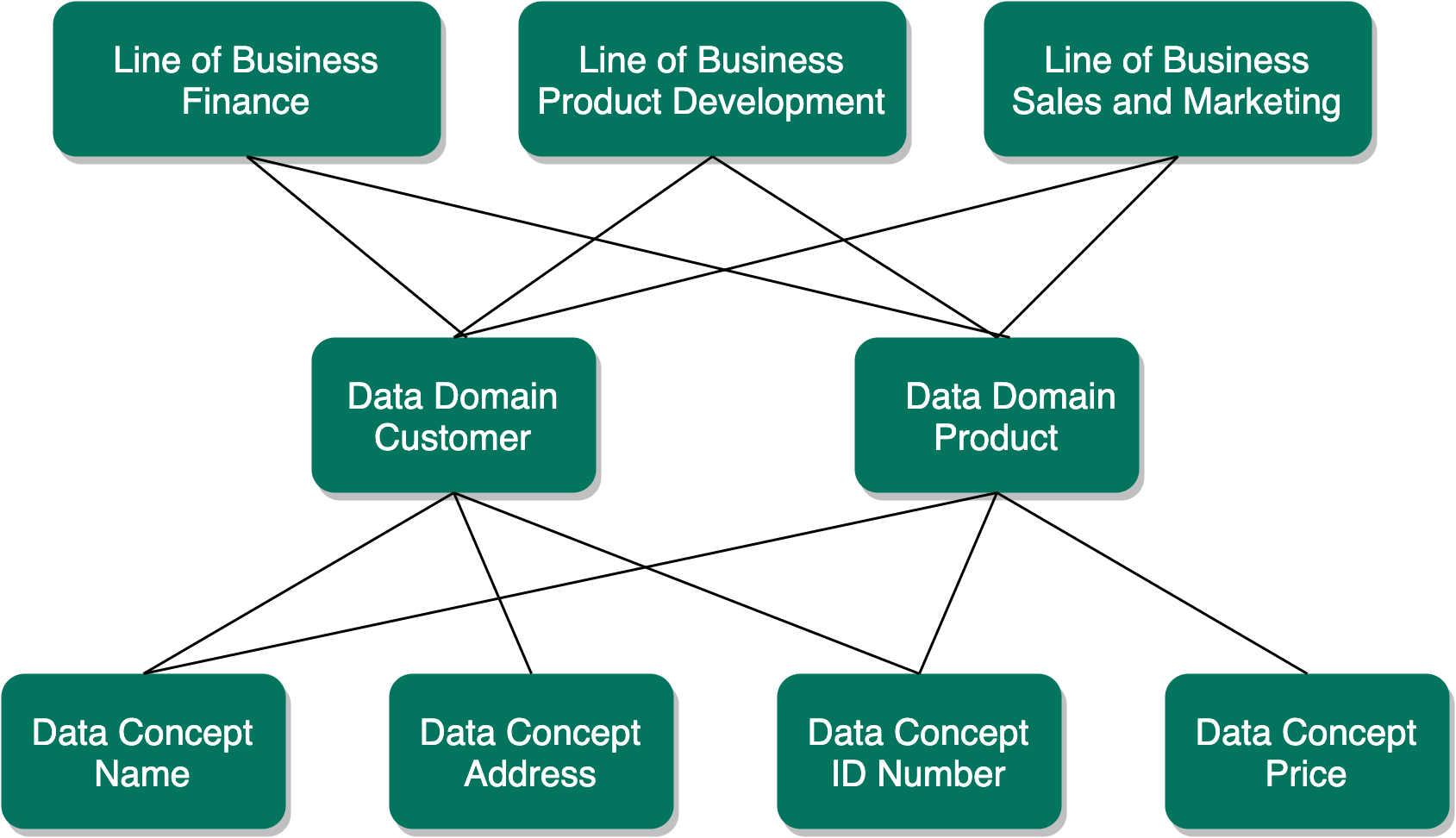The conceptual data layer is the highest level of organization in the Guided Stewardship operating model.
It represents context-independent data structures within an organization, the overarching structure of objects and elements within an organization’s data landscape. It is where you define concepts, such as Customer and Product, and their component fields, without direct reference to system-specific implementations.
The conceptual data layer consists of the following asset types:
Note The organization of the conceptual data layer is based on many-to-many relationships, which makes the conceptual data layer more concise and flexible than tree-like arrangements that rely strictly on one-to-one and one-to-many relationships.

Tip The Data Domain-Data Concept structure is closely related to the Data Entity-Data Attribute structure of the logical data layer. The main difference between them is that the conceptual data layer is context-independent, whereas the logical data layer describes the structure in an individual System.